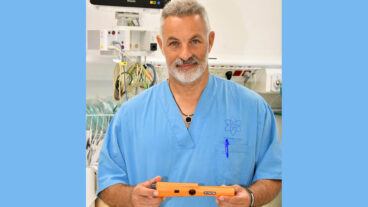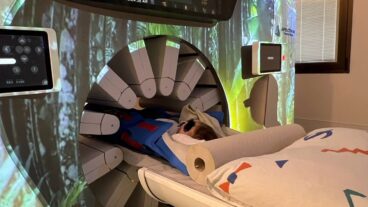Sweat ducts in our skin behave like tiny helical antennas.The question, ‘how do you feel?’ could become redundant in years to come after Israeli researchers discovered a method to remotely sense the physiological and emotional state of human beings using tiny radio antennas already in our skin.
The scientists, from The Hebrew University of Jerusalem, believe their discovery, which is being patented and commercialized by Yissum, the university’s technology transfer company, could be used to help remotely monitor medical patients, evaluate athletic performance, diagnose disease and remotely sense the level of excitation in a person – which could have significant implications in the biomedical engineering, anti-terror and security technology fields.
The key to the discovery by Prof. Yuri Feldman, Prof. Aharon Agranat, Dr. Alexander Puzenko, Dr. Andreas Caduff and PhD student Paul Ben-Ishai – all from the university’s Department of Applied Physics, lies in human sweat ducts.
The researchers investigated the internal layers of the skin using a new imaging technique called “Optical Coherent Tomography.” The images produced by this technique revealed that the sweat ducts, which are the tubes that lead the sweat from the sweat gland to the surface of the skin, are shaped as tiny coils.
Similar helical structures with much larger dimensions have been used widely as antennas in wireless communication systems. This made the investigators consider the possibility that the sweat ducts could behave like tiny helical antennas as well.
In a series of experiments, the team measured the electromagnetic radiation reflected from palm skin at the frequency range between 75GHz and 110GHz. It was found that the level of the reflected intensity depends strongly on the level of activity of the perspiration system. In particular, it was found that the reflected signal is very different if measured in a subject that was relaxed, and if measured in a subject following intense physical activity.
In a second set of measurements it was found that during the period of return to the relaxed state, the reflected signal was strongly correlated with changes in the blood pressure and the pulse rate that were measured simultaneously.
The initial results of the research were published last week in the prestigious scientific journal The Physical Review Letters, arousing great interest among scientists, physicians and science writers.
The scientists emphasized however, that the research is still at an early stage and that it will take some time before the full significance of the research is understood and its technological potential evaluated.












